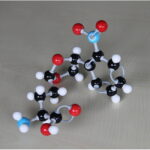@article{Forato2016,
title = {Comparison of Zirconium Phosphonate-Modified Surfaces for Immobilizing Phosphopeptides and Phosphate-Tagged Proteins},
author = {Florian Forato and Hao Liu and Roland Benoit and Franck Fayon and Cathy Charlier and Amina Fateh and Alain Defontaine and Charles Tellier and Daniel R Talham and Clémence Queffélec and Bruno Bujoli},
doi = {10.1021/acs.langmuir.6b01020},
issn = {15205827},
year = {2016},
date = {2016-01-01},
journal = {Langmuir},
volume = {32},
number = {22},
pages = {5480--5490},
abstract = {Different routes for preparing zirconium phosphonate-modified surfaces for immobilizing biomolecular probes are compared. Two chemical-modification approaches were explored to form self-assembled monolayers on commercially available primary amine-functionalized slides, and the resulting surfaces were compared to well-characterized zirconium phosphonate monolayer-modified supports prepared using Langmuir-Blodgett methods. When using POCl3 as the amine phosphorylating agent followed by treatment with zirconyl chloride, the result was not a zirconium-phosphonate monolayer, as commonly assumed in the literature, but rather the process gives adsorbed zirconium oxide/hydroxide species and to a lower extent adsorbed zirconium phosphate and/or phosphonate. Reactions giving rise to these products were modeled in homogeneous-phase studies. Nevertheless, each of the three modified surfaces effectively immobilized phosphopeptides and phosphopeptide tags fused to an affinity protein. Unexpectedly, the zirconium oxide/hydroxide modified surface, formed by treating the amine-coated slides with POCl3/Zr4+, afforded better immobilization of the peptides and proteins and efficient capture of their targets.},
keywords = {},
pubstate = {published},
tppubtype = {article}
}

